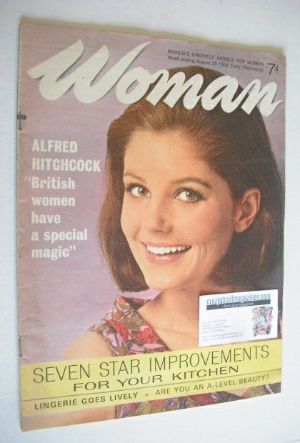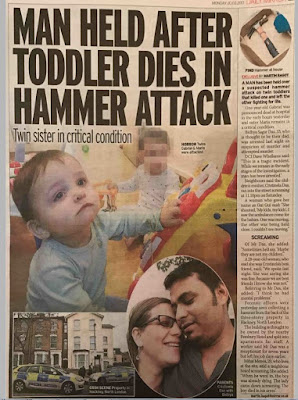In what ways do music videos encode viewpoints and ideologies? Make reference to Formation by Beyoncé and Riptide by Vance Joy. [30]
Analysis:
In what ways are themes of conflict encoded in this video?
- Conflict between white/black culture
- Conflict between high and low culture
- Conflict between modern/past culture
- Conflict between police and rebellion
- Mise-en-scene "stop shooting us" accompanies lyric "get eliminated" symbolises threat of death made against the black community.
What are the functions and purposes of this music video?
- Raise awareness of world disasters, and to show that just because New Orleans is in an area mainly inhabited by a black race, that it should still matter as much as if it was in a white area.
What groups are represented in this music video? Are these representations typical or subversive?
- Black Women - Quite subversive representations
- White high class - Typical representations of white high culture, eg. suit and tie, big ancient houses, maids, children in white dresses and bonnets.
- 1950's New Orleans fashion - subversive as these settings/costumes are set in a modern music video, which is quite postmodernist, and unpredictable.
In this shot, their body language connotes power and independence, empowering their black female role, using their curvy figures to create a message.
In this shot, Beyoncé makes angelic movements to add to ideologies of her taking a goddess-like role.
Analysis
Mise-en-scene:
Periods of dark lighting to emphasise lyrics in the song. Costume generally gets more distorted nearer to the end of the song as tension builds.
Some objects and costumes suggest themes of horror, eg. ouija board, knives, horrified facial expressions, objects moving by themselves (paranormal activity).
Non-linear time narrative, very postmodernist.
Reference to 1970's fashion, style.
Editing:
Rapid and fast paced, matching the lyrics. Variety of types of shots. The speed of the video makes it deliberately confusing/complex - breaking the rules.
Singing motif (where the female main character sings lyrics): lack of distinction between high+low culture (postmodernist).

















What does this reveal about the representation of women?
- Some shots reveal women as strong, powerfull and independent, whereas others represent them as weak and vulnerable. It creates a Binary opposition.
- It challenges gender representation.
Component 1b)
Explore the ways in which production, distribution and circulation have shaped the newspapers you have studied. Make reference to the Daily Mirror and The Times. [15]
THE TIMES:
Headline lexis: Man held after baby dies 'in attack on twins'. Giving the title 'man' , makes the murderer anonymous and mysterious. It also creates enigma and makes audiences want to know who this 'man' is. The verb 'die' sounds cold and intrusive, as it is explaining the murder of a child. Attack on twins gives the story a narrative and sounds like a title to a story. This gives a basic idea on what the advert is based on.
Selection of Images:
The only image used includes a low angle shot of police entering the crime scene.
DAILY MIRROR:
Headline lexis: Man held after toddler dies in hammer attack
Use of 'toddler' makes the victim sound even more vulnerable and innocent, giving the story more tragedy. 'Hammer attack' sounds violent, and the producer has jumped to conclusions on how the murder happened just to make the story more tragic.
Selection of Images: The use of an image where the victim looks upset creates more emotion and sensationalistic characteristics to the news report. An image where the potential murderer looks content makes audiences think that murderers can look like an average person, and you can never know who can be capable of doing such a thing.
Layout: This news story is considerably larger in size in comparison to the times report, maybe because the story evokes emotion, tragedy and scandal which is more common of a tabloid newspaper.
In what ways can media products incorporate viewpoints and ideologies? (Talking only about these articles)
Media language can be used to incorporate viewpoints and ideologies. For example, in the Daily Mirror article, emotive language is used to describe the victim to enhance his vulnerability and innocence. This gives the story more tragedy, and consequently giving a viewpoint in which the children are in danger. This language creates ideologies based around the murderer. "Hammer attack" gives connotations of violence and makes the murderer sound more brutal as the murder weapon is mentioned.
Barthes codes are also used to create enigma in the headline. The unidentified suspect makes audiences suspicious and want to know more.
Component 2
To what extent has sociohistorical context influenced representations in the magazines you have studied? Make reference to both Adbusters and Woman. [30]
Page/description of textual elements (see toolkit)
|
Target audience demographic and audience appeal
|
Audience interpretations (making reference to Hall), making reference social, cultural and historical circumstances
|
Possible audience uses and gratifications (Gauntlet)
|
| Front cover of Woman 1960's magazine. | Middle aged women in the 1960's. Typically women that take the role of mother and housewife. | The hair and costume of the subject on the front cover is very contextual to its time. | The front cover could act as an escapism for women during this time as they may have a flawed life where they don't have much purpose. This front cover allows them to depict a perfect life with attractive looks, and they can desire to have this look. |
| Front cover of Adbusters alternative magazine. | Young adults, mixed genders. Specifically targeted to people who are interested in helping improve society eg. global warming/ | This front cover weirdly conforms to the gender stereotype that men are aggressive. The body language and facial expression portray the image that men are genetically violent. | This magazine would fit best with the surveillance use and gratification as the magazine is very informative. |
How does Adbusters conform to and subvert stereotypical representations of gender?
 In the front cover, Adbusters conforms the stereotypical representation of men obtaining aggressive qualities. This is clear in the image, where the male subject carries both a violent facial expression and body language. His screwed up screaming face, and clenched fist suggests hostility. The magazine links this to themes of war, through use of costume in the image's mise-en-scene. This reiterates the stereotype of men taking on roles of anger and violence, as the front cover implies the man has involvement with the military.
In the front cover, Adbusters conforms the stereotypical representation of men obtaining aggressive qualities. This is clear in the image, where the male subject carries both a violent facial expression and body language. His screwed up screaming face, and clenched fist suggests hostility. The magazine links this to themes of war, through use of costume in the image's mise-en-scene. This reiterates the stereotype of men taking on roles of anger and violence, as the front cover implies the man has involvement with the military.
Lisbet Van Zoonen theorises that gender is constructed through codes and conventions of media products.
Reflect the social/cultural content?
- The whole cover doesn't reflect much information. This could suggest that the magazine expects it's audiences to be of more intelligence and knowledge of the worlds news. It reflects the cultural and social expectations of it's readership.
- Beneath the soldier uniform, the image reflects the social/cultural content, by presenting a common civilian to present the representation of rebellion in the west.
Textual Analysis:
 Layout and design, simple but effective layout drawing attention to magazine title and beauty of image subject's face.
Layout and design, simple but effective layout drawing attention to magazine title and beauty of image subject's face.
Font, large font used in the masthead using quite a swirly font type, maybe stereotypical for women. The title is almost as if it is glowing, with highlighted area around the text maybe to give angelic characteristics to women and make them feel better about themselves during a depressing time following the war.
Mise-en-scene, an attractive woman used to sell the magazine, wearing costume, hair and make-up that was extremely popular during the time. Eg, short bob hair, eyeliner and coloured lips, as well as a flowery printed bold dress. Stereotypical use of the colours pink and purple to represent female interests, which would have been more than acceptable at the time.
Lexis/Copy, "British women have a special magic" make women feel glorified and valued, and will intrigue audiences to ask why is this?
Analyse the ways in which the advertising in Woman constructs stereotypical representations of women.
 The advertisement shown on the left, is a prime example of how advertisement in the 60's magazine Woman, creates a stereotypical representation of women. Using theories explored by Lisbet Van Zoonen, the women's body is being used in a media product as a spectacle for heterosexual male audiences, which reinforces patriarchal hegemony. This means the stereotype that woman are important and significant only for their bodies and for the sole purpose to appeal to men is being reinforced by this advertisement. The subjects seductive body language and facial expression, combined with her face full of make-up gives us the impression that all women are and want to use a passive attitude.
The advertisement shown on the left, is a prime example of how advertisement in the 60's magazine Woman, creates a stereotypical representation of women. Using theories explored by Lisbet Van Zoonen, the women's body is being used in a media product as a spectacle for heterosexual male audiences, which reinforces patriarchal hegemony. This means the stereotype that woman are important and significant only for their bodies and for the sole purpose to appeal to men is being reinforced by this advertisement. The subjects seductive body language and facial expression, combined with her face full of make-up gives us the impression that all women are and want to use a passive attitude.
The copy uses a very sexual and teasing tone while also using lots of repetition, for example, "all-over feminine...all-day fresh...". This can link to the stereotype that women must retain the domestic role of cleaning.





No comments:
Post a Comment